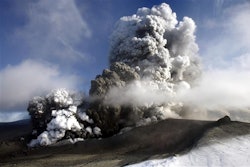“. . . a fighting-machine without men as a means of attack and defense. The continuous development in this direction must ultimately make war a mere contest of machines without men and without loss of life . . .” You might think this quotation is from the discussion that followed the speech on May 30 by Christof Heyns, the United Nations “special rapporteur on extrajudicial, summary, or arbitrary executions,” who came before the UN Human Rights Council in Geneva to call for a moratorium on the development of lethal autonomous robots (LARs, for short).
But in fact, they are the words of famed inventor Nikola Tesla, writing in the June 1900 issue of Century magazine. Besides his better-known inventions of three-phase power, induction motors, and high-voltage Tesla coils, Tesla founded a field he called “telautomatics” which we would refer to today as radio-controlled vehicles. Visitors to his New York City laboratory in the late 1890s could watch Tesla as he pointed out a model boat on a stand, complete with battery-powered motor and rudder. With no intervening wires, Tesla could remotely command the boat’s motor to run and turn the rudder, all by means of what later became known as radio waves. In 1899, he even demonstrated the model to an organization called the Chicago Commercial Club. As the boat made its way around an artificial lake set up in the auditorium, Tesla steered it at will and even set off exploding cartridges. Clearly, military operations were in Tesla’s mind, and he tried to interest government agencies in his invention, but to no avail.
Although Tesla’s remote-controlled battleships never got beyond the toy-model stage, his imagination went straight on to the ultimate extreme: machines that fought entirely without human intervention. Tesla’s dream (or nightmare, depending on your point of view) became reality with the secret deployment in the 1960s of drones: unmanned aircraft equipped with sensors, communications links, and missiles that destroy selected ground targets on receipt of a human command. But the human is typically thousands of miles away and undergoes no personal risk worse than eyestrain from too many hours at a computer terminal. This is not to ignore the psychological problems that remote-control killing can cause, but simply to point out the highly asymmetrical nature of an engagement between persons on the ground in Afghanistan, say, who have been determined by espionage to be worthy of elimination, and those in the U. S. who carry out the decisions of the President to eliminate them.
UN staff member Heyns is talking not about conventional drones, in which a human being is still involved in the decision to kill, however remotely, but about machines that would “decide” who and when to kill on their own, without the direct involvement of a human in the contemporaneous decision train. In a way, we have had systems like that for years. They are called land mines. They are exceedingly dumb, and what they do should not be dignified by the term “decision,” but when a person deploys a land mine, that person has no idea when it will explode or who it will kill. That depends instead on a mechanical condition, namely, getting close enough to set off the land mine. Although the conditions that a lethal autonomous robot would require before killing are no doubt more complicated, the difference between an LAR and a land mine is one of degree more than one of kind.
To continue reading the full article, click here to visit our partner publication, PD&D.
Read Next























